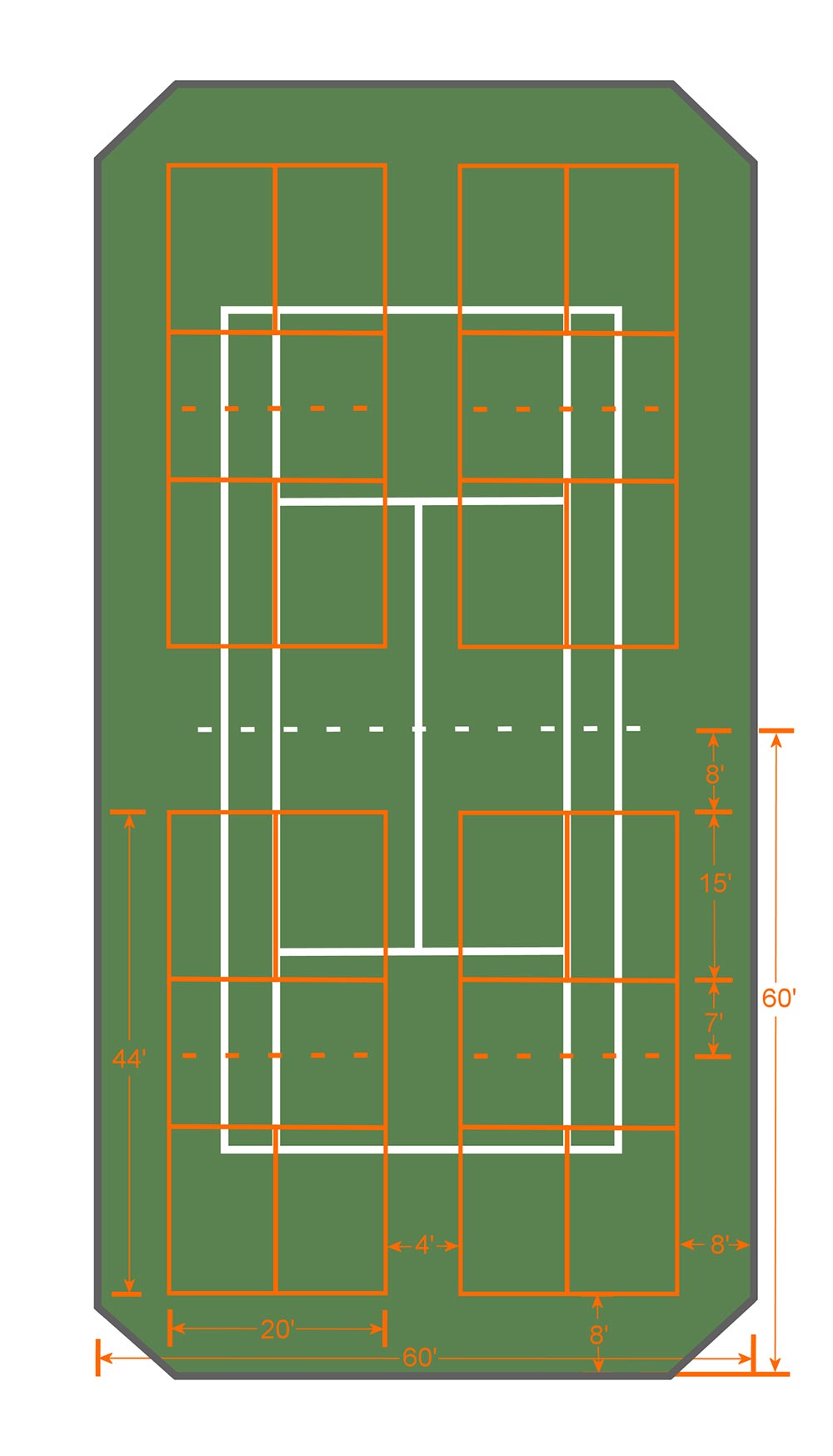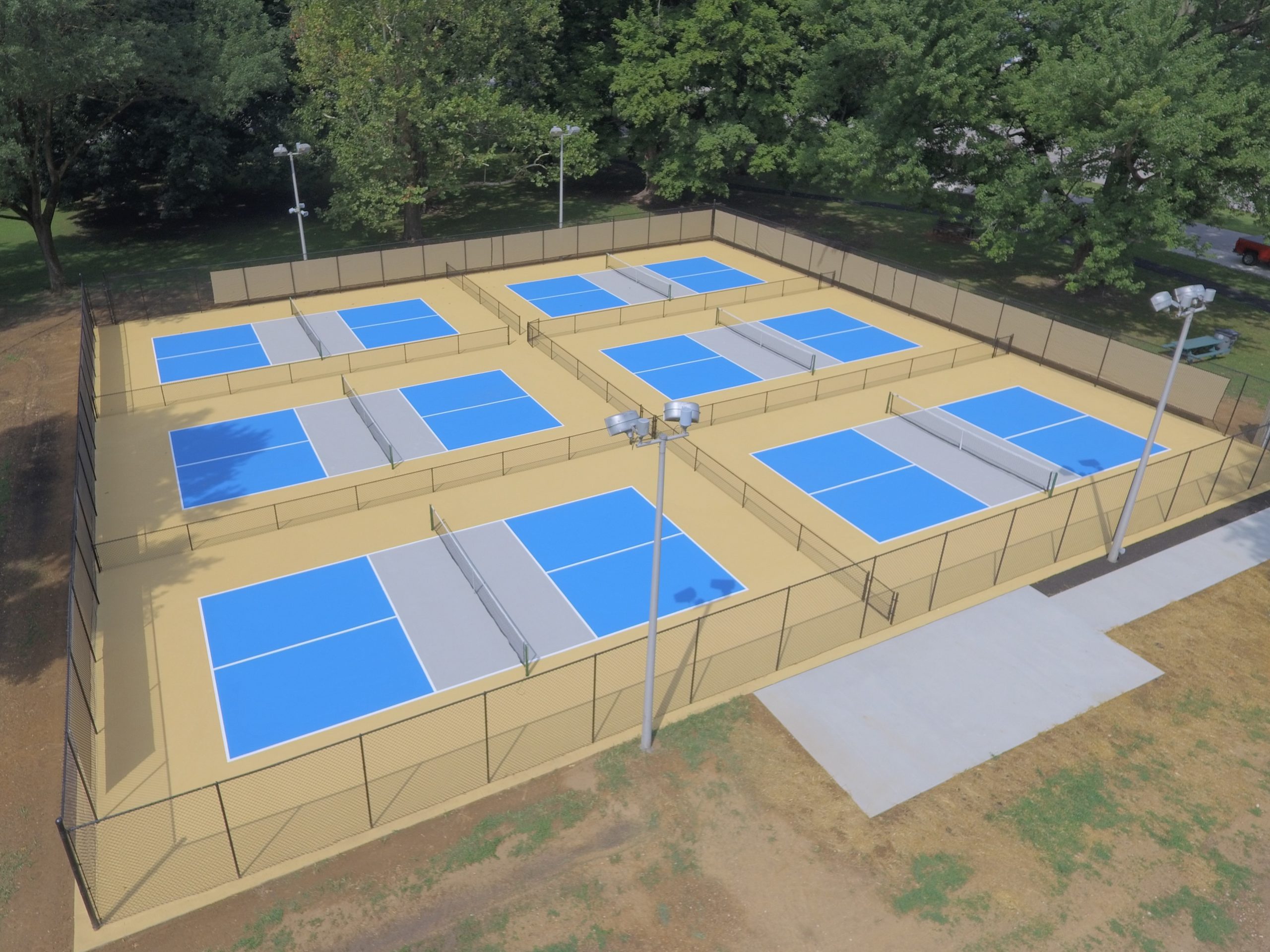Comprehensive Guide to Pickleball Courts Design & Construction in Illinois and Midwest
Comprehensive Guide to Pickleball Courts Design & Construction in Illinois and Midwest
Blog Article
The Crucial Solutions Needed for Building and Preserving High-Quality Pickleball Judiciaries
The building and construction and maintenance of high-quality pickleball courts pivot on an array of vital services that guarantee optimum efficiency and gamer security. Secret factors to consider include the selection of ideal surface area materials, adherence to standard dimensions, and the implementation of efficient water drainage systems.

Picking the Right Surface Materials
Picking the proper surface area materials for pickleball courts is vital to guaranteeing optimal playability and safety and security. The option of surface area directly affects game dynamics, gamer convenience, and injury prevention. Typical products consist of asphalt, concrete, and specialized acrylic finishes, each offering unique advantages and considerations.
Asphalt is commonly favored for its cost-effectiveness and toughness; nevertheless, it needs routine upkeep to stop fracturing and surface degradation. Concrete offers a durable and durable alternative, offering a smooth having fun surface that can hold up against hefty use. Yet, it may demand additional therapy to enhance traction and minimize slipperiness.
Polymer layers have actually gotten popularity due to their capacity to enhance performance features, such as shock absorption and traction, while also permitting personalization in design and color. These coatings can be used over existing surface areas, making them a functional alternative for court upgrades.
Eventually, the choice of surface area material need to line up with the intended usage of the court, spending plan restrictions, and neighborhood environment problems. Consulting with professionals who focus on sporting activities facility building can offer beneficial insights, making sure that the selected products meet both player demands and security criteria.
Correct Court Capacities and Layout

The net height is set at 36 inches at the sidelines and 34 inches in the facility, which is essential for keeping the honesty of the video game. In addition, the court needs to be bordered by a minimum of 3 feet of clear space on all sides, enabling secure activity and preventing collisions with bordering challenges.
Positioning is an additional essential aspect of court format. Preferably, courts ought to be straightened north-south to minimize the influence of sun glare on gamers. Focus to these details will improve the overall having fun experience and advertise fairness in competitors. By adhering to these requirements, facility managers can ensure that their pickleball courts fulfill the required criteria for both recreational and professional play.
Efficient Drain Solutions
Reliable drain services are crucial for preserving the top quality and playability of pickleball courts, particularly after severe weather. Illinois and midwest. Appropriate drain systems avoid water accumulation on the court surface area, which can cause surface area degradation, mold and mildew development, and safety threats throughout play
To achieve effective drain, it is important to design the court with a slight slope, preferably around 1-2% far from the center. This gradient promotes the natural overflow of water. Furthermore, incorporating a well-designed water drainage system, such as perforated pipelines or French drains pipes, can even more boost water management. These systems need to be purposefully put at low factors to accumulate and reroute excess water efficiently.
Porous surface areas, like certain kinds of asphalt or specialized sports surface areas, permit water to penetrate, decreasing the risk of standing water. By applying these effective drain services, facility managers can make certain that pickleball courts stay usable and risk-free, therefore improving the total experience for players and maintaining the long life of the financial investment.
Routine Maintenance Practices
While the enjoyment of pickleball is often connected to the quality of the court, regular maintenance practices are important for preserving its condition and making sure a secure having fun environment. The initial step in maintenance includes routine assessments to determine any splits, surface area wear, or debris that can impact gameplay.
Cleaning the court routinely is essential, as this prevents the build-up of dust, leaves, and various other materials that can weaken the surface and develop risks. A pressure washer or a mop can properly get rid of particles while making certain that the court surface stays intact.
Furthermore, regular resurfacing is essential to maintain the court's playing characteristics and prolong its life-span. This might entail applying a brand-new layer of acrylic or sealer to shield versus dampness and UV damage.
Furthermore, keeping the surrounding areas, such as fences and nets, contributes to the general safety and security and looks of the center. Establishing a maintenance schedule that consists of these techniques will certainly not just enhance the playing experience but additionally safeguard versus expensive repairs in the future. Regular focus to these elements guarantees that pickleball courts stay an inviting and secure atmosphere for gamers of all skill degrees.
Lighting and Access Considerations
Correct illumination and ease of access factors to consider are important components in the layout and maintenance of pickleball courts. go right here Ample lights not only enhances the playing experience but additionally guarantees security for players and spectators throughout reference night or low-light problems. Courts should be lit up with high-grade LED lighting, giving uniform brightness while decreasing glow. The positioning of components have to be strategically intended to prevent darkness and make sure clear exposure of the court borders and web.
Access is just as crucial to promote inclusivity. Courts must abide by the Americans with Disabilities Act (ADA) guidelines, making sure that they are easily obtainable for individuals with movement problems. This includes giving ramps, appropriate signs, and designated seats areas for viewers (Illinois and midwest). Additionally, carrying out a smooth surface and ensuring that the surrounding areas are without challenges can promote far better accessibility.
Including both lights and accessibility considerations not only improves the general customer experience however also underscores the dedication to producing a comprehensive and inviting atmosphere for all players. By prioritizing these aspects, centers can foster a dynamic pickleball community that brings in players of various skill levels and backgrounds.

Conclusion
Finally, the facility and upkeep of top notch pickleball courts demand an extensive technique that consists of choosing ideal surface area products, sticking to conventional dimensions, and implementing efficient water drainage systems. Routine maintenance and evaluations are critical for long life, while sufficient illumination and accessibility features advertise a secure and comprehensive environment for gamers. Jointly, these important solutions not only enhance the playability and comfort of the courts go to this web-site however also contribute substantially to injury prevention and general fulfillment of customers.
Report this page